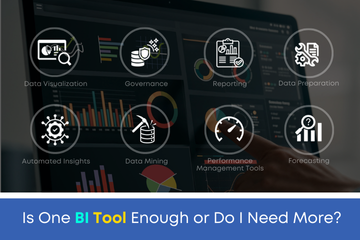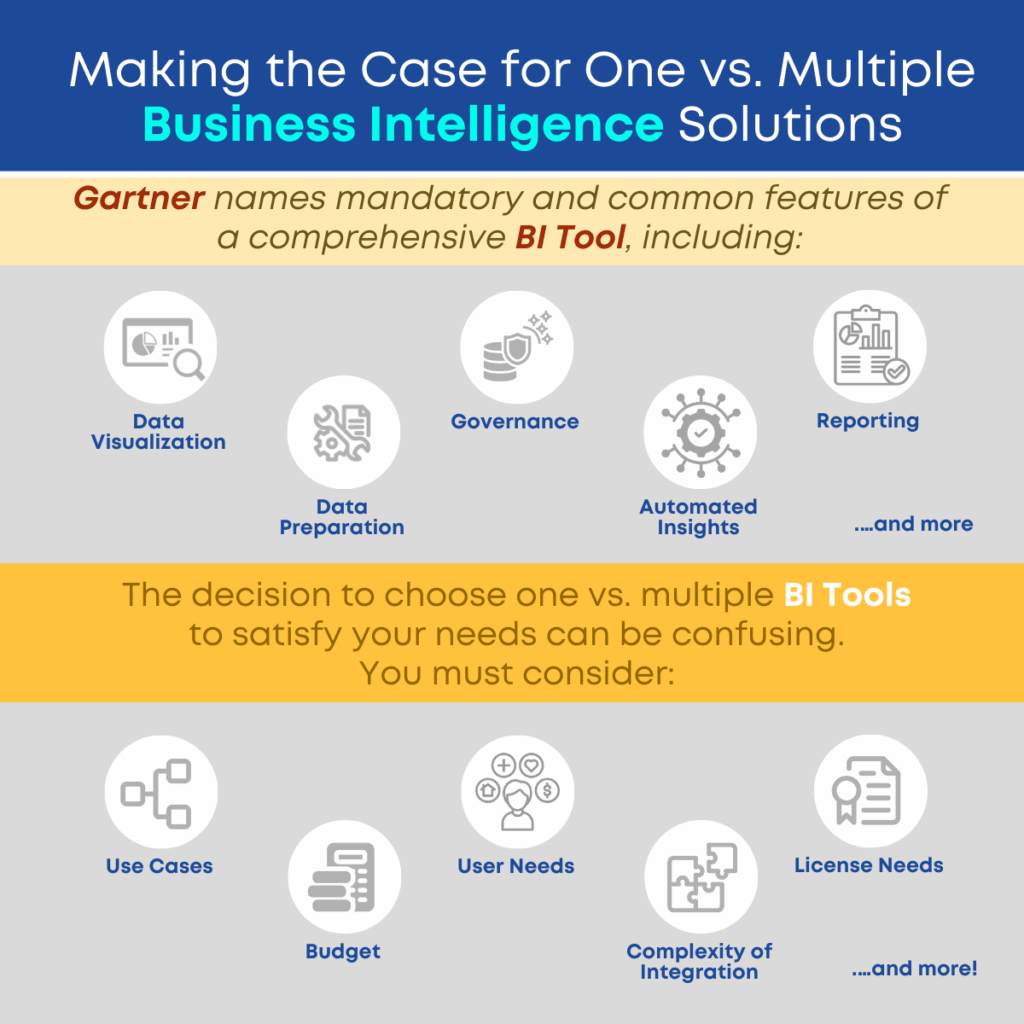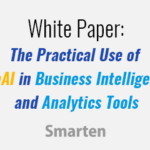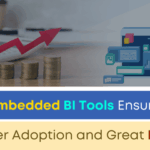Should I Have One, Two, Three or More BI Tools?

Whether your business wishes to implement its first business intelligence solution, or you wish to upgrade your solution to satisfy additional requirements, or your business divisions have diverse business needs, the RIGHT business intelligence and augmented analytics solution is crucial. To protect your Return on Investment (ROI) and reduce your Total Cost of Ownership (TCO), you must select a solution that will suit all your team members, and be flexible enough to grow with your organization and provide support now and in the future.

Gartner names 12 mandatory and common features of a comprehensive BI tool, which includes:
- Data visualization
- Governance
- Reporting
- Analytics Catalog
- Data preparation
- Data science integration
- Automated insights.
- Metrics layer
- Data storytelling
- Natural language query (NLQ)
- Collaboration
- Composability
For many businesses today, the decision can lead them down a winding path to the question: ‘Can I truly find one solution to suit all my needs and, if I can’t, is it possible to successfully combine and integrate more than one BI tool?’
Let’s take a closer look at these questions in an effort to help you understand the tradeoffs and the decision-making process.
Choosing ONE BI Tool
Benefits
- Data Centralization – Team members can seamlessly access a single data solution
- Provides a centralized, simplified platform for user management and access rights
- Maintenance and Administration – The IT team has only one system to manage
- Reporting – Dashboards and reports leverage one data model, and reporting formats and scenarios are uniform and interconnected
- Ensures one focused, experienced IT and technical team
Challenges
- Scalability – As your organization grows, you may have issues supporting an expanded user base and data volume
- Performance Issues – For organizations with a large data volume, users may experience a lag in response time
- Data Security – If your business has multiple business units, the administration of a single solution may be a challenge, as the model will require multi-layered, granular security and permissions
- Constrains the business to one solution, with one roadmap for the future provided by one vendor
Choosing Multiple Solutions
Benefits
- Scalability – Smaller, more modular solutions allow the organization to execute development independently without affecting other systems
- Performance – User experience (Ux) for dashboards and reporting is likely to be better, with suitable speed and responsive dashboards and reporting
- Support – Each independent module or solution can be supported independently without affecting other solutions
Challenges
- Duplicate Data or Analytics – If proper architecture is not in place, the systems may duplicate data or analysis or a system may use the wrong model for reporting
- Integration – Combining and integrating multiple systems requires a sophisticated roadmap to accommodate cross-functional reporting and analytics and data access
- Continuity – Data mapping, distribution and consistency can be a challenge
- User Management and Access Rights – It can be challenging to manage these processes across disparate platforms
- Technical and IT – Multiple tools require expertise across all frameworks and platforms
These are just a few of the examples of benefits and challenges of the one vs. many approach of business intelligence solutions. While the temptation to consolidate and choose one tool can seem practical, the enterprise should consider the benefits and the challenges of each approach and compare them to their needs. Each tool may offer specific benefits that cannot be achieved by a one solution approach, and may better address user expectations and needs and satisfy the goals of the organization.
For a long time, the analytics industry has touted the idea of ‘best of breed,’ and there is a case to be made for choosing the ‘best’ for each scenario. Gartner’s most recent Magic Quadrant places 6 of 20 vendors in the niche quadrant and many of these niche vendors may offer solutions that meet a specific need within your own enterprise. So, don’t be too quick to eliminate the possibility of multiple solutions.
Many CIOs think that at standardization on one platform should always be considered at the enterprise level. While that approach has its advantages, it has lot of disadvantages too.
Advantages include:
- One vendor, one relationship
- Concentrated skill set within the team
- A simple, uncluttered application landscape
Disadvantages include:
- Commitment to one vendor (who may or may not be dependable)
- Enterprise is confined to one vendor roadmap, limitations, upgrades and future development
- One solution platform limits enterprise platform choices and flexibility
- One tool may not satisfy niche or specific use cases across all divisions, departments and teams
While a one solution choice may work for a smaller organization or one without complex needs, you may wish to consider a balanced approach. When you strike a balance using a practical, limited best of breed approach, you can address the needs of specific business units or users. Be judicious about your choices, so as not to clutter the application landscape with too many applications and complicate your architecture.
You may wish to choose one solution for enterprise IT reporting, or one for smart data visualization for business users, or one that supports Citizen Data Scientists, or a tool that is focused on big data processing. Your assessments should be based on your use cases, user needs, license needs, budget, etc. While some organizations use as many as five (5) BI tools, the enterprise should limit their expansion to 2-3 tools in order to avoid chaos in integration, maintenance, the need for IT skills, costs etc.
While the assessment of needs and requirements for ANY software solution can be time consuming, it does pay off in the end and, especially if you are considering multiple BI tools, it is worth taking the time to thoroughly assess your needs so your business can create the ideal analytical landscape for IT, data scientists, business analysts and business users.
Contact Us to discuss your analytical needs and to find out more about Modern And Traditional BI Tools, Augmented Analytics solutions, Citizen Data Scientist training and the process of choosing the right Analytics Solution for your business. Explore our free White Papers: ‘Enabling Business Optimization And Expense Reduction Through The Use Of Augmented Analytics,’ and ‘A Roadmap To ROI And User Adoption Of Augmented Analytics And BI Tools.’
Original Post : Is One BI Tool Enough or Do I Need More?











